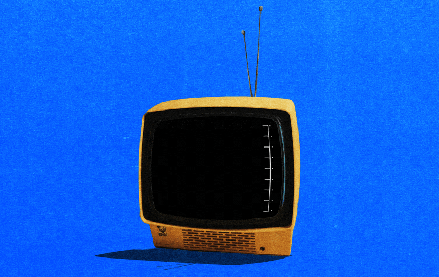Future of TV Briefing: How mid-sized advertisers may shape this year’s upfront market

This Future of TV Briefing covers the latest in streaming and TV for Digiday+ members and is distributed over email every Wednesday at 10 a.m. ET. More from the series →
This week’s Future of TV Briefing looks at how mid-sized advertisers may be less inclined to make upfront commitments this year — which could have the effect of pressing larger advertisers to commit.
- The upfront’s middle-class crunch
- NFL’s streaming situation, YouTube’s AI Overviews and more
The upfront’s middle-class crunch
There are plenty of ad market indicators to track in this year’s TV and streaming upfront marketplace (we’ll be publishing a list in a couple weeks). But among them is — between the economy deteriorating, TV networks and streaming services seeking commitment increases and the easier access to streaming inventory outside the upfront — to what extent may mid-sized advertisers, such as direct-to-consumer brands, opt out of the upfront. And if they do, is that actually such a bad thing for the sell side?
For upfront sellers, there’s an understandable hope that these relatively smaller advertisers will increase their upfront participation. That could not only help to offset any softness in commitment amounts from large advertisers, but also the advertisers that are newer to the upfront are the ones most subject to commitment increases. For these advertisers, though, those factors could be what dilutes their upfront interest.
“There is a little bit of more interest in [small- and mid-sized advertisers] into the upfront, at least that’s the push for a lot of the networks,” said one agency executive.
“Because of the proliferation of new direct-to-consumer companies that want to get into big splashy advertising like television, they’ve all paid those big increases, but they might not see the return on investment from it. A lot of those newer brand marketers are going to place a higher value on digital video,” said a second agency executive.
The question of how much money advertisers will commit in this year’s upfront is not limited to mid-sized advertisers. The looming tariffs, dwindling consumer sentiment and potential threat of a recession has ad budgets up in the air across the industry.
But larger advertisers have typically participated in the upfront for long enough — decades in many instances — and therefore enjoy legacy pricing. Like someone who signed a lease in Manhattan in the ’80s and experiences regular rent hikes but from a relatively low base, these advertisers are less incentivized to cut back their upfront commitments to the point of losing that legacy pricing.
By contrast, mid-sized advertisers, such as DTC brands, are usually newer to the upfront and have entered at higher price points, with TV network and streaming service owners using the newer entrants to secure their year-over-year gains in upfront commitments. So like someone who signed an exorbitant lease, they can be less committed to renewing and instead seek out other accommodations, like traditional TV’s scatter marketplace or the streaming inventory available for programmatic purchase outside of an annual commitment.
“The way that we transact and activate digital, a lot of it’s through buying platforms [such as demand-side platforms], and there it’s not required or needed to have non-flexible terms,” said the second agency executive. They added, “You go into your DSP, you set up something with Peacock or whoever, and you just flip a switch and can cancel whenever you want.”
This all may sound like mid-sized advertisers opting out of the upfront is all bad for TV networks and streaming services. It’s not ideal; the upfront allows sellers to secure revenue for the following year, which can be especially important in an uncertain economy. But many sellers have put contingencies in place in the form of their programmatic sales channels as well as self-serve ad buying tools, which can have the effect of actually incentivizing some advertisers to keep their upfront commitments.
The programmatic and self-service options provide a safety net of sorts for TV networks and streamers to catch any ad dollars that may fall out of the upfront. They also open up inventory to more advertisers, including those that couldn’t even afford to participate in the upfront anyway. This democratization of demand can have the effect of pressuring some advertisers to remain committed to the upfront for fear of being subject to the higher ad prices outside the upfront.
“Bringing new brands into the fold changes the supply dynamics a little bit. That will impact the upfront. We’re adding a completely new client set that can create more supply-demand dynamics,” said a TV and streaming executive.
What we’ve heard
“The media owners will need to be flexible and forgiving and probably need to offer some benefit to clients and buyers when we transition over to Nielsen plan plus big data. We still need to understand what the impact to the CPM is going to be with this new audience measurement.”
— Agency executive
Numbers to know
$8.9 billion: How much revenue YouTube generated from ads in the first quarter of 2025.
41 million: Number of paid subscribers that NBCUniversal’s Peacock had at the end of Q1 2025.
33%: Percentage share of new streaming subscribers in Great Britain that chose to sign up for ad-supported tiers in Q1 2025.
$109 million: How much subscription and ad revenue TelevisaUnivision’s ViX streaming service generated in Q1 2025.
-427,000: Number of pay-TV subscribers that Comcast lost in Q1 2025.
-181,000: Number of pay-TV subscribers that Charter lost in Q1 2025.
What we’ve covered
TikTok touts livestreaming as next big revenue stream for creators and agencies:
- TikTok said creators are generating $10 million in revenue daily through livestreaming on the platform.
- The revenue stems primarily from audiences purchasing virtual currency to give to creators who can convert it into actual money from TikTok.
Read more about TikTok here.
Music promoters turn to other platforms besides TikTok to invest in as part of a broader creator playbook:
- Music promoters have been paying TikTok creators to use their songs in videos.
- With the threat of a TikTok ban, though, they are ramping up spending with creators on Instagram and YouTube.
Read more about music promoters’ creator playbook here.
As Patreon and Substack enter the mix, the livestreaming landscape is dividing creators:
- The creators going live on Twitch and Kick and those livestreaming on Patreon and Substack are largely sticking to their respective platforms.
- The main difference is between pure-play livestreaming platforms and platforms that have live video as part of a broader media mix.
Read more about livestreaming here.
Roblox marketplace competition over how ads are purchased led at least three brands to reconsider their spend:
- Roblox and Roblox studios are pitching advertisers on different marketing opportunities on the platform.
- In some cases, Roblox’s sales team has inserted itself into studios’ deals with brands.
Read more about Roblox here.
What we’re reading
NFL’s streaming rights situation:
The premier U.S. sports league may start feeling some pressure to secure more streaming rights holders as the eroding traditional TV business could undermine its next payday from existing rights holders, according to The Information.
After renaming HBO Max to just Max and overloading the streaming service with shows and movies from Discovery’s properties, Warner Bros. Discovery is shifting strategy with its flagship streamer by pulling some Discovery shows from the service, according to The Wall Street Journal.
Disney’s agreement to buy a majority ownership in Fubo may have served to scuttle the antitrust lawsuit that the sports streamer brought against Disney, Fox and WBD over their planned Venu sports streaming service, but it’s also attracted an antitrust investigation by the U.S. Department of Justice, according to Bloomberg.
The Trade Desk takes 20% of the prices advertisers pay for CTV impressions, which has given rival demand-side platforms an opportunity to win over advertisers and agencies by offering lower take rates, according to AdExchanger.
The Google-owned video platform is testing its version of the search giant’s AI-summarized search results, according to Search Engine Land. The test seems like it could be controversial if the AI Overviews end up cannibalizing viewership for creators’ and publishers’ videos by delivering the information that someone would have otherwise had to click play to receive.
Want to discuss this with our editors and members? Join here, or log in if you're already a member.
More in Future of TV

Future of TV Briefing: How the future of TV shaped up in 2025
This week’s Future of TV Briefing looks back at the top topics and trends that overtook the TV, streaming and digital video industries in 2025.

Programmatic agency execs speak out on CTV transparency
At the recent Digiday Programmatic Marketing Summit, agency executives spoke out — on stage and in behind-closed-door town hall sessions — on how they see transparency in CTV.

Future of TV Briefing: How agencies are setting up their programmatic teams for the agentic AI era
This week’s Future of TV Briefing recaps two sessions from last week’s Digiday Programmatic Marketing Summit about how agencies’ programmatic buying teams are evolving.







